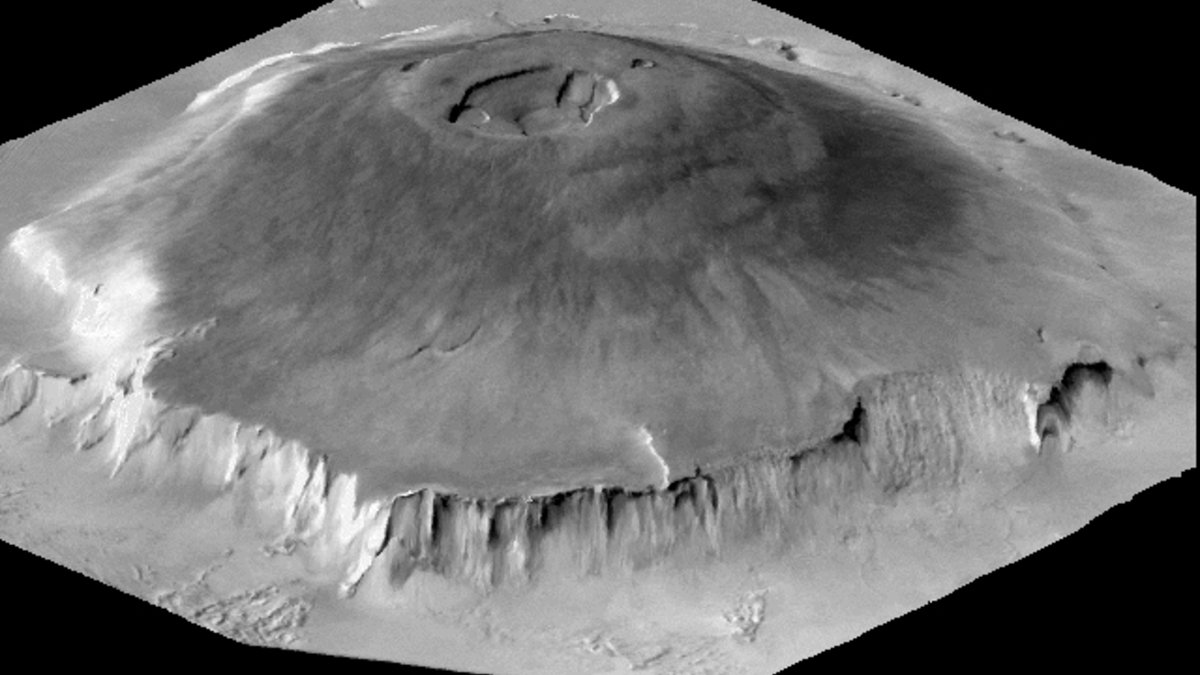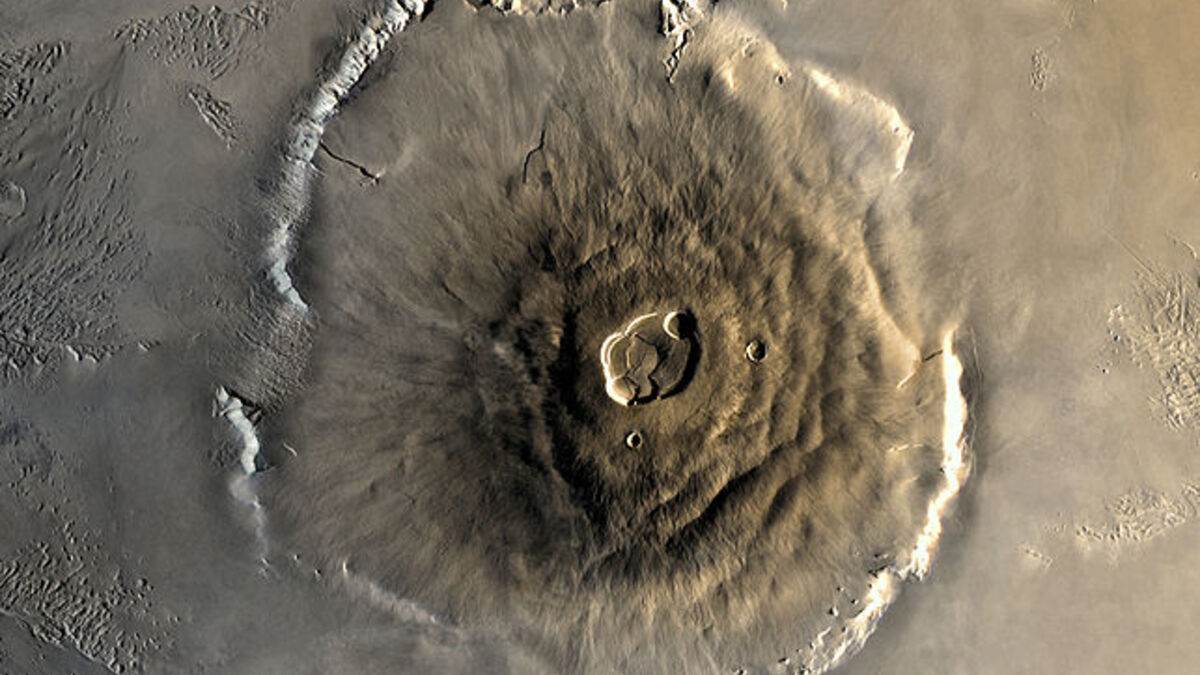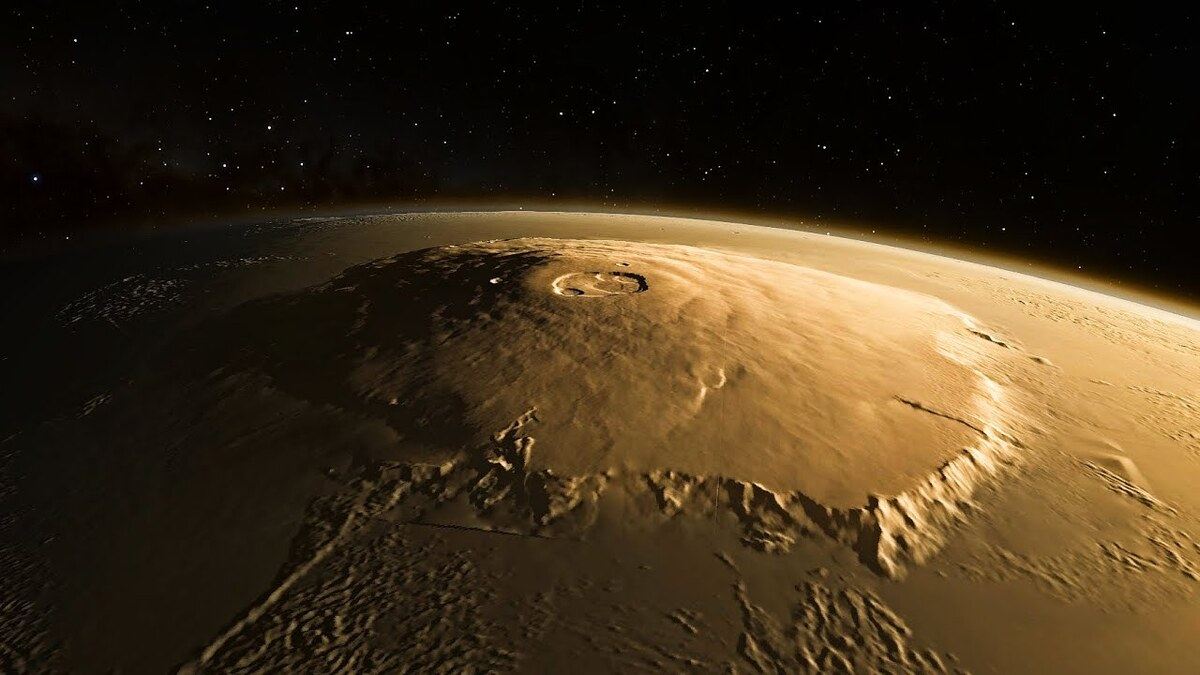As we all know Olympus Mons is the most extreme volcano in the solar system, which is located in the Tharsis volcanic region of Mars. Its height of 25 kilometres makes it nearly three times the height of Earth’s Mount Everest, which is about 8.9 km high.
Olympus Mons is a gigantic shield volcano, which was formed after lava slowly crawled down its slopes. This means that the mountain is probably easy for future explorers to climb, as its average slope is only 5%. At its summit is a spectacular depression some 85 km wide, formed by magma chambers that lost lava (likely during an eruption) and collapsed.

Some interesting fact you should know is that Olympus Mons is one of the largest volcanoes, the tallest planetary mountain and the second tallest mountain currently discovered in the Solar System which is comparable to Rheasilvia on Vesta.
Also to note that Olympus Mons is a part of Tharsis Rise, a large volcanic structure on Mars. And if we compare Olympus Mons to the tallest volcano on Earth, USA’s Mauna Loa, then the volume contained by Olympus Mons would be about hundred times that of Mauna Loa, and the Hawaiian island chain that houses the Earthly volcano could fit inside its Martian counterpart.
An interesting thing to know that Olympus Mons is a relatively young volcano having formed during Mars’s Hesperian Period. Although it has taken billions of year to form, some regions of the mountain may be only a few million years old, relatively young in the lifetime of the solar system. As such. Olympus moons may still be an Active Volcano with the potational to erupt.

Being a shield volcano, Olympus Mons has a very low sloping profile. The average slope on the Volcano’s flank is only 5 degree. The shape of Olympus Mons is distinctly asymmetrical, its flanks are shallower and extend farther from the summit in the northwestern direction than they do to the southeast. We can compare the volcano’s shape and profile to a “circus tent” held up by a single pole that is shifted off centre.
Due to the size and shallow slopes of Olympus Mons, an observer standing on the Martian surface would be unable to view the entire profile of the volcano, even from a great distance. The curvature of the planet and the volcano itself would obscure such a synoptic view. Similarly, an observer near the summit would be unaware of standing on a very high mountain, as the slope of the volcano would extend far beyond the horizon.
Some Of Us Wonder Why Is Olympus Mons So Big?
Answer to that might be longer and high eruption rates and low surface gravity. When we compare volcanoes on Earth to volcanoes on Mars we find that by size volcanoes in the Tharsis region of Mars are 10 to 100 times larger than those anywhere on Earth. The lava flows on the Martian surface are observed to be much longer, probably a result of higher eruption rates and lower surface gravity.
Another reason why the volcanoes on Mars are so massive is that the crust on Mars doesn’t move the way it does on Earth. On Earth, the hot spots remain stationary but crustal plates are moving above them. As the plate moves over the hotspot, new volcanoes are formed and the existing ones become extinct. This distributes the total volume of lava among many volcanoes rather than one large volcano. On Mars, the crust remains stationary, and the lava piles up in one gigantic volcano.

Olympus Mons is an unlikely landing location for automated space probes in the near future. The high elevations preclude parachute-assisted landings because the atmosphere is insufficiently dense to slow the spacecraft down. Moreover, Olympus Mons stands in one of the dustiest regions of Mars. A mantle of fine dust obscures the underlying bedrock, possibly making rock samples hard to come by and likely posing a significant obstacle for rovers.
But anyway it’s a great site to visit for future Astronauts. As it’s iconic view is totally awesome as well we can learn so much here.

Do we know how old the Volcano is?
115 million years to 2000 million years old